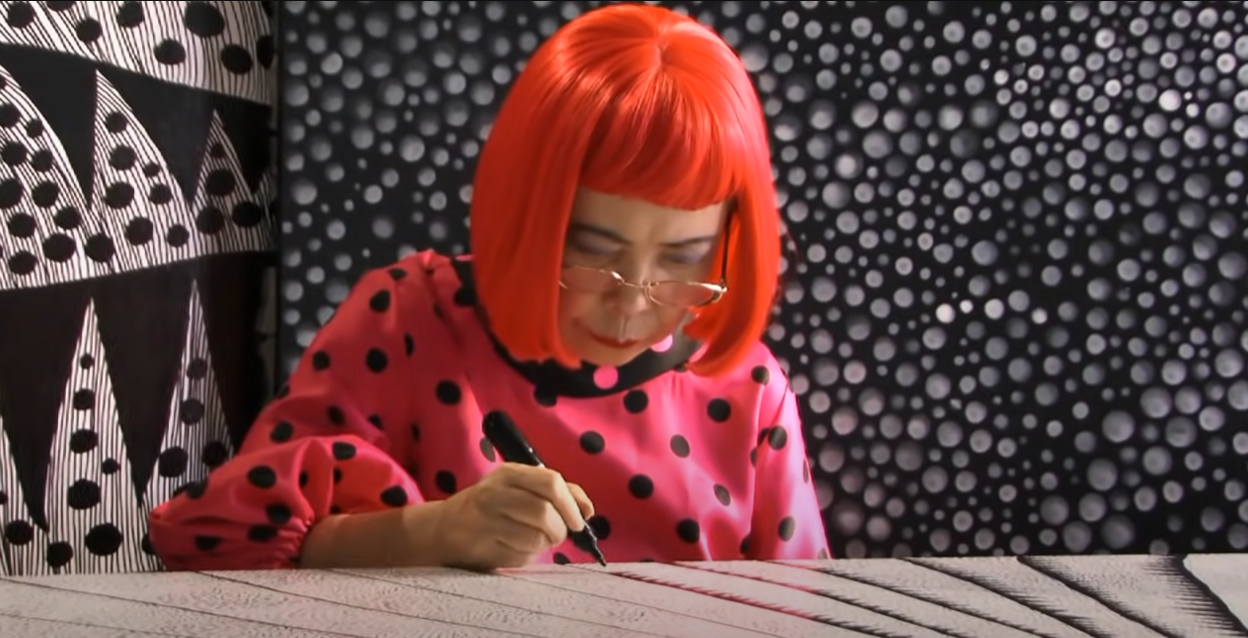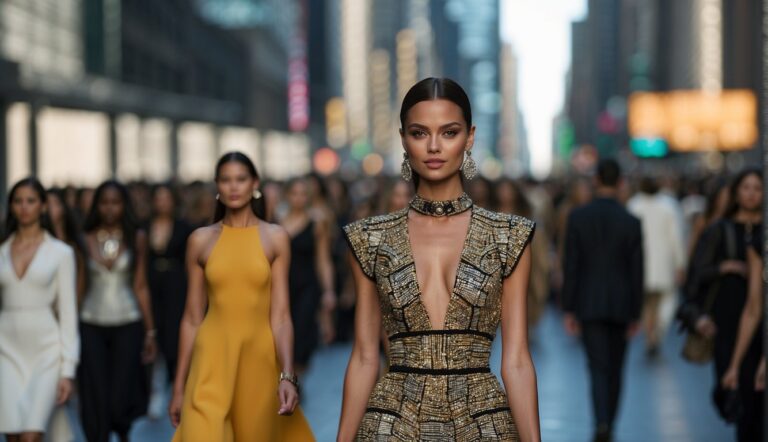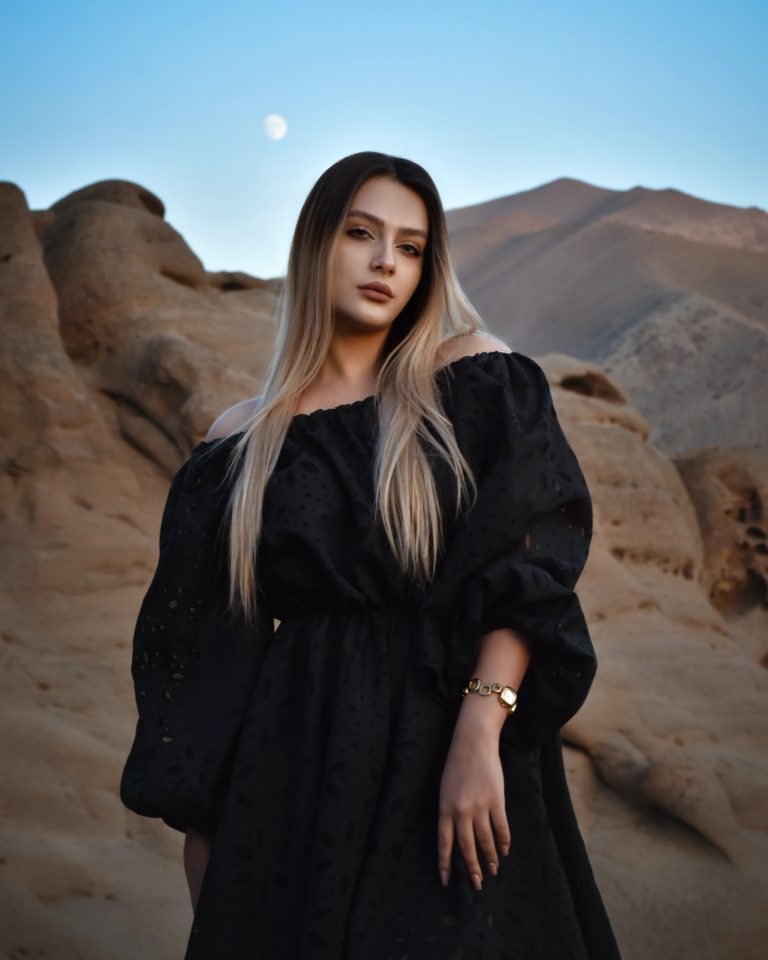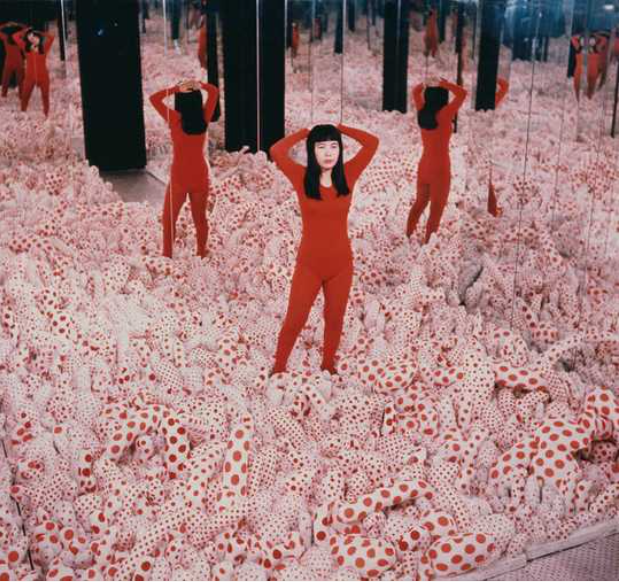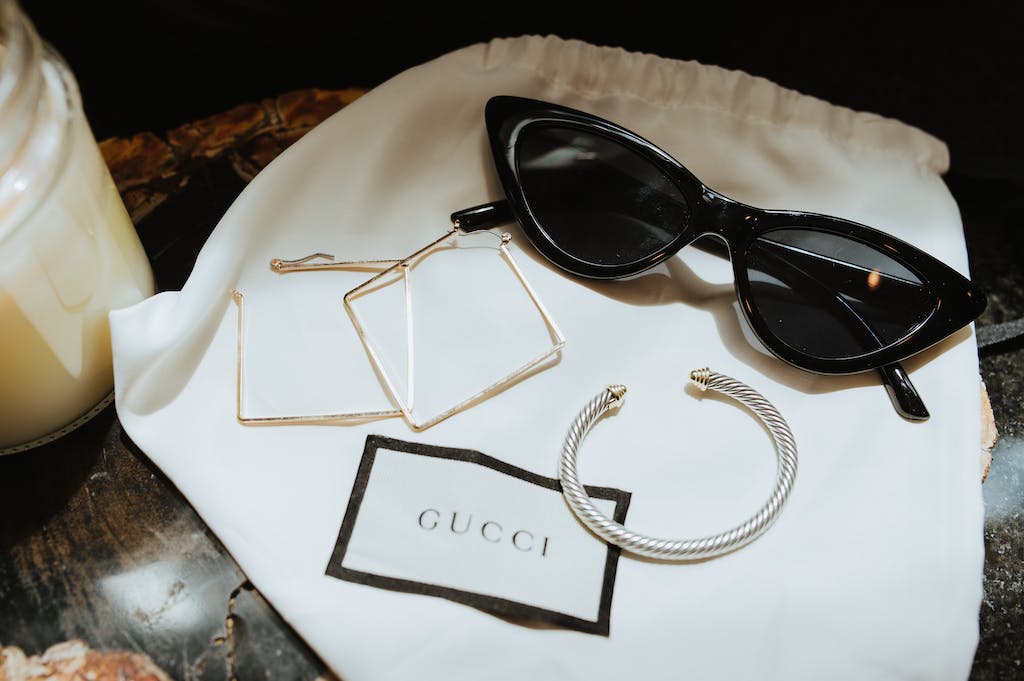All You Need to Know About the Louis Vuitton x Yayoi Kusama Collection
Louis Vuitton x Yayoi Kusama Collection
Louis Vuitton is currently promoting a collaboration with the amazing Yayoi Kusama, who is considered one of the most important living artists from Japan today. Yayoi Kusama’s eccentric stare and recognizable vibrant red bobcat hairstyle have been seen worldwide in the latest Louis Vuitton x Yayoi Kusama campaign. This campaign has sparked worldwide conversation and received many mixed reviews. Shall we feel excited or terrified? Kusama’s mental illness is after all the forefront of her artistic inspiration.
Whether we like it or not, Louis Vuitton has utilized her iconic pop-up dots and created a unique collection once again since their first collaboration in 2012. However this time, Kusama’s image is being used to a much greater extent in their marketing strategies worldwide. I want to address whether it is appropriate to focus so immensely on Kusama’s image, for someone with a mental illness. Let’s first look at how Yayoi Kusama’s image is being used around the globe.
READ MORE: Who is Yayoi Kusama?
How Yayoi Kusama’s Image Is Being Exhibited Globally
Hyper-realistic 3D Anamorphic Billboards
In celebration of the Louis Vuitton and Yayoi Kusama collaboration, Louis Vuitton has released hyper-realistic 3D anamorphic imagery all around the world in iconic locations such as New York, Chengdu, London, and Hangzhou. The video showcases pumpkins jumping out of an LV suitcase, dotted in Kusama’s favorite motif the polka dot. Eventually one of them turns into her hair and you can see Kusama’s eccentric stare and how the pumpkin resembles her classic bob hairstyle. It also features what looks like her giving an LV monogrammed yellow pumpkin out to the world, and painting her signature dots on Louis Vuitton bags.
Large Yayoi Kusama Structures Across Louis Vuitton Stores All Over the World
Louis Vuitton Display Window: The Audio-Animatronic Yayoi Kusama
In New York, if you stand from across the street looking at the Louis Vuitton store, it looks like a woman is painting circles in their display window. When you step closer, you realize that it is actually a robot, in the image of Yayoi Kusama painting the circles she sees so vividly in her life. The robot is so lifelike that its eyes widen, and looks to grimace while mimicking the way Yayoi Kusama would paint her circles and it is deceptively lifelike.
Such illustrative artworks of Yayoi Kusama have captured many people’s attention causing many to whip out their iPhones across the globe.
Why Some Feel Uncomfortable With Louis Vuitton Using Kusama’s Image
Yayoi Kusama suffers from visual and aural hallucinations which she uses as inspiration for her art. She also currently lives in a psychiatric hospital and is constantly on medication to prevent her depression and mental health from spiraling out of her control. In a way, some question if it is ethical to portray her works, and feel that Kusama might not have the mental capacity to truly understand what it means to have her image so widely used and they are worried that she is being exploited.
However, I implore you to look closely at how she lived her entire life as a struggling artist and her wish for fame and recognition. It is also important to understand Kusama has always played with her persona, extending her art further than the boundaries of a canvas and incorporating herself into her artwork.
How Kusama Incorporated Herself In Her Artwork
I would argue that Kusama’s image at the forefront of Louis Vuitton’s marketing campaigns is a stunning contrast to the struggle that Kusama has had as an artist, constantly being dismissed and failing to be recognized for her art both in Japan and New York throughout her youth.
Kusama’s art has always been deeply personal and was part of the movement in the 1960s when artists were blurring the lines between their art and themselves. Many artists began to literally live in their art, both in their own and others’ skins. She often painted herself and other naked bodies with polka dots and donned polka dots on her choice of clothing. Literally becoming one with her art pieces.
She is also often seen in photos of her artwork. In her first infinity room in New York City, she wore red the same color as the red dots on her soft phallic structures. I feel that this strongly implies that on occasion she feels to be a dot in the room and she is being consumed by the room as she intends for her viewers to feel the same way. It also gives us a glimpse into her mental illness, and how she might feel “obliterated” by the dots and repetition of the patterns when she experiences her visual hallucinations.
Yayoi Kusama’s Earnest Longing For Fame
Kusama experienced a dramatic change in lifestyle when she moved to New York City in 1957. From living with her wealthy Japanese family in Matsumoto, a rural city in Japan, she lived in poverty as a struggling artist for decades in New York. Struggling to survive, she fell into a depression over and over again when she felt her male peers stole her artwork and achieved worldwide fame. Unfortunately, more established galleries at this time favored male over female artists and Kusama often felt unrecognized.
It is no wonder that Kusama has given Louis Vuitton approval to use her image to showcase where their latest collection’s art is coming from. Her bouts of depression were so severe that Kusama had even tried to commit suicide by throwing herself out of a window.
How Louis Vuitton is Giving a Voice to Yayoi Kusama
Personally, I find it riveting to know the artist behind the scenes, the work that inspires her, and how she views the world. I love the way they took many aspects of Kusama’s work into the 3D anamorphic imagery. From the spotted pumpkins to them turning into tentacles, something she explored often within her sculptural art.
Whilst Louis Vuitton focuses heavily on Kusama, they also have been doing a marvelous job conveying the way her art impresses the feeling of love, peace, and infinity on her viewers’, values Kusama has said are very important to her. In her 2018 documentary Infinity, Kusama explains that “I made my art to try and change people’s minds about the love in the world that can last forever.” As a child, she also lived through war, having spent time in a factory making military parachutes, this must have impacted her a lot as she states, “I wanted to spread hope to the world through my artwork.”
The playful music from their 3D billboard advertisements and how Kusama looks big in contrast to their buildings, or small in contrast to their bags gives a feeling of wonder and makes me personally feel like a child again when I look at her artwork.
To me, this is similar to how Kusama tries to control how her audience sees her artwork, as her infinity mirror rooms surround the viewer and overwhelm us. We lose control of our perspective and instead become part of the art installation, the mirrors reflecting us and each other going on for infinity.
Why did Louis Vuitton Collaborate with Yayoi Kusama?
Creative Director Marc Jacobs first met Kusama in 2006 and mentions that he was drawn to her because her “obsessive character and the innocence of her artwork touched me.” In his own words, “her energy is endless,” much like the repetition she uses in her artwork.
She is Not One to Be Swayed By Others’ Opinions
Growing up Yayoi Kusama was completely at odds with her parents and Japan’s traditional views on women. Her parents did not support her dream to be an artist or have a career and instead wanted her to be a traditional wife and arranged a marriage for her.
Kusama fought strongly against the thought of being in an arranged marriage and her parents were so angry with her that they told her to either follow their rules or leave their house. In a show of defiance, this was what led to Kusama leaving for New York City to carve a path for herself.
When interviewed about younger artists looking up to her, Kusama reveals, “I believe that advice shouldn’t come from other people, but that each person should gain a direction from oneself – by overcoming difficulty and true direction will come from overcoming adversity.”
Even in her old age, I find Kusama stays true to herself, firmly expressing herself through her art. Her achievement of Louis Vuitton collaborations has exposed her art to a new audience, giving her a larger platform and voice to spread her wish for infinite love across the globe.
Overall, the Louis Vuitton X Yayoi Kusama collection is a vibrant fusion of luxury fashion and iconic art, showcasing the unique blend of Kusama’s signature polka dots and organic forms with Louis Vuitton’s classic design, offering an exclusive and visually captivating fashion experience.
